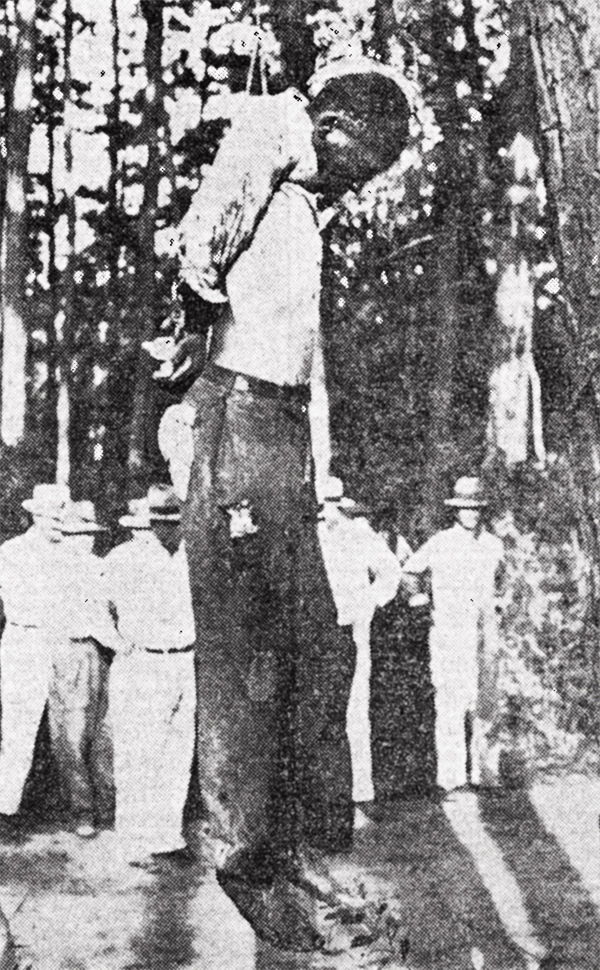The Lynching of Oliver Moore

I went to Mr. Jefferson because a guy told me Mr. Jefferson had wood.
And he said,
“Vines, I’m gonna tell you now. You’re black and I’m white.
That wood there came off a hanging tree.”
I said,
“I don’t even believe that.”
He said,
“I don’t give a damn what you believe.
They used to hang people on that tree.”
Dozens of armed and angry white men stormed the Edgecombe County jail at midnight on August 19, 1930. The mob was there to abduct and kill Oliver Moore who had been accused of sexual improprieties with two young white girls. Moore didn’t try to fight the mob. He had no chance against their numbers and weapons.
In a motorcade of vehicles with license plates removed, the mob drove about 20 miles south to Moore’s own house. They tied a plow line under his arms and hoisted him onto a tree limb. As he hung there helpless, the men shot Moore at least 15 times. Some reports said 200.
Moore was 29 years old. He was married. None of the surviving reports mention his wife’s whereabouts, but it’s possible that she was there at home witnessing the gruesome murder. The mob lingered for hours. As sunrise approached, many people—hundreds, according to some newspaper reports—showed up to see Moore’s blood-drenched corpse hanging from the tree.
Sheriffs from Wilson and Edgecombe county arrived on the scene about 9:00AM and cut the plow line. Moore’s body lay on the ground for another hour or so as they filled out reports and deliberated about who had jurisdiction.

The Edgecombe County Sheriff, a district solicitor, and several outside parties (including the NAACP) conducted investigations into Oliver Moore’s lynching, but no one in the community would come forward with information. There were dozens, perhaps hundreds, of people in this small rural community who could have identified the perpetrators of the crime. No one did.
This silence underscores the fact that Moore’s lynching was truly an act of terrorism. Moore’s murderers terrorized the entire community. Black men could imagine the same thing happening to them. Black women could imagine the same thing happening to their sons, husbands, brothers, or fathers. Even white women were terrorized as white men repeated the refrain that they should be grateful for such violence because it was a necessary chivalrous protection of their sexual purity and morality.
This was 1930—the dawn of the Great Depression—and the economic status of white farmers in rural Eastern North Carolina was only marginally better than the black laborers who worked their fields. Gripped by fear and uncertainty, these white men turned to terrorism. In doing so, they traumatized an entire community. As the silence around Moore’s murder remained unbroken for decades, so did the collective trauma.
Freeman Vines said this about working on some of the guitars in this exhibit: “I felt the wood was trying to talk to me, trying to tell me something.” We might imagine that the voices coming through the wood were some of the voices silenced by acts of terror like Oliver Moore’s lynching. Perhaps this exhibit can spark new dialogue, moving beyond generational silence and helping to heal the collective trauma of the past.
Exhibition commentary written by Dr. Will Boone, Lecturer of Music, NC State University
Explore more about these issues in American life
Suggested Readings and Film
- Bruce E. Baker, This Mob Will Surely Take My Life: Lynchings in the Carolinas, 1871-1947 (2008)
- Arthur Raper, The Tragedy of Lynching (1933)
- FILM: An Outrage: A Documentary Film about Lynching in the South (2010)

